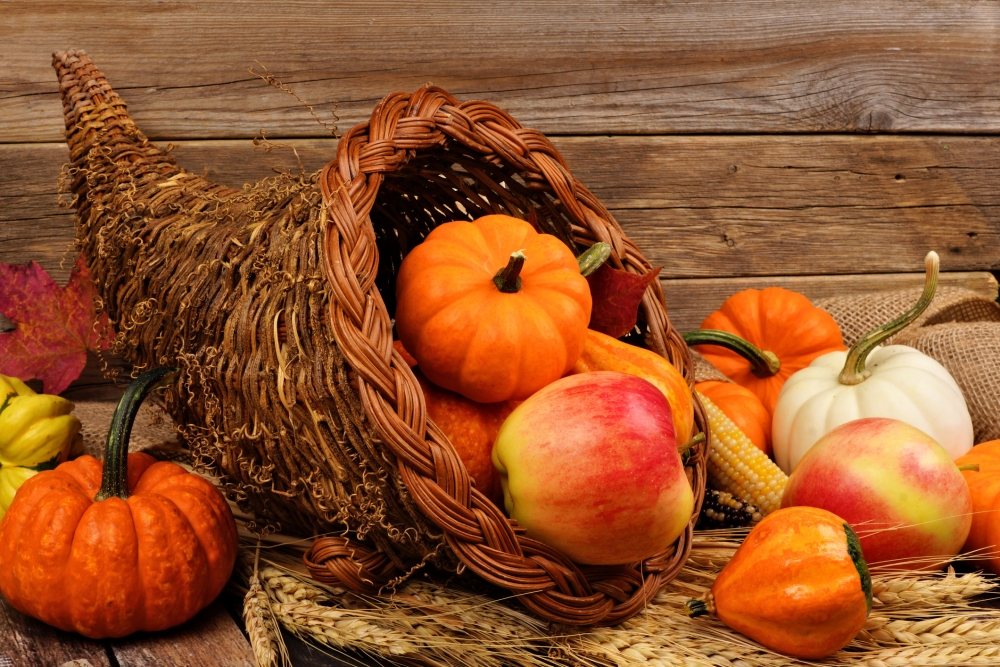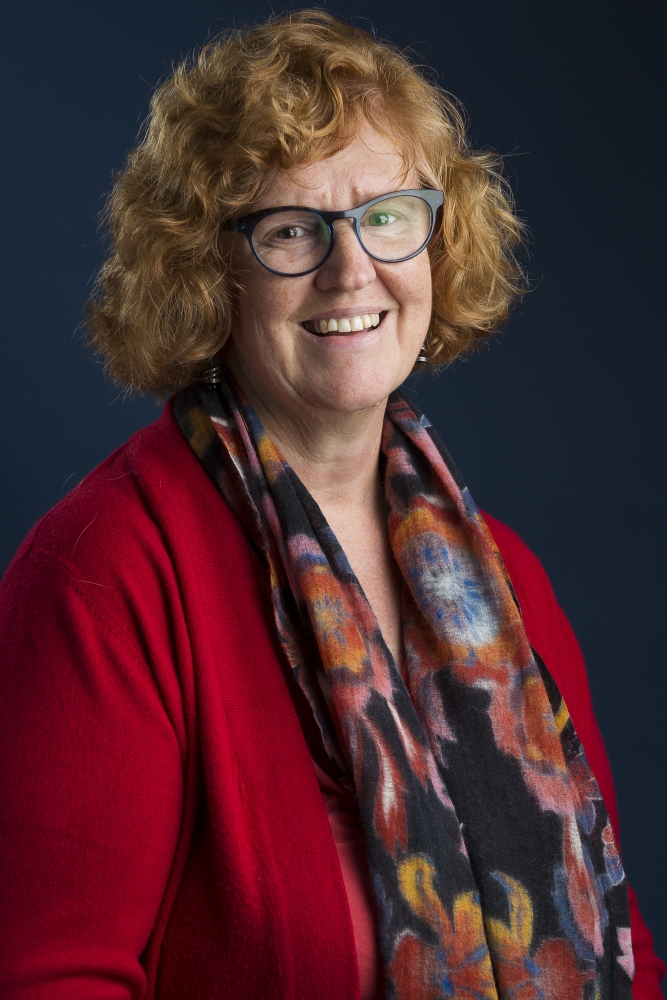
An Invented Tradition

When you sit down to your Thanksgiving feast this week be sure to give a shout out to the Old Colony Club. And include Sarah Josepha Hale in your expressions of gratitude while you’re at it. Without them, the fourth Thursday of November would be just another workday.
“Thanksgiving is a powerful distillation of the dynamics of 17th-century colonialism and what comes later,” said UC Santa Barbara’s Ann Marie Plane, a specialist in colonial North American and Native American history.
“It’s presented in our popular culture and in our educational system as if it was an unbroken tradition, but when you really look at it you see that it’s what historians call an invented tradition,” she added. “It was created out of facts, but it has a much more complicated, much more interesting history with lots of twists and turns, and the story tells you a bit about American history and the struggles the nation has been through already.”
And that’s where the Old Colony Club — and Hale — come in.
We all know the story about the pilgrims of Plymouth Colony coming together with Massasoit, paramount sachem of the local Wampanoag confederacy in 1621 to share the harvest bounty. But that gathering, as revealed in texts such as the writings of colonist Edward Winslow, suggests the affair was not entirely amiable.
According to Winslow’s description of the event, Massasoit arrived with about 90 men — meaning that Native Americans outnumbered the 53 colonists nearly two to one, including women and children. And though they brought food with them because, as Plane explained, even a successful harvest couldn’t provide enough for such a large group, their contingent purposely represented a show of force.
For their part, the colonists used the event to “exercise our arms,” as Winslow wrote. The demonstration of their weapons was intended to “shock and awe” the native people, Plane said. Native American activists have correctly highlighted the primary role of European colonialism in these events for decades — at least since the 1970s, she noted.
While that first “Thanksgiving” gathering is documented in the historical record, it does not represent the beginning of an unbroken tradition that continues to this day. For that, we turn to Plymouth, Massachusetts, in the mid-18th century.
“A group called the Old Colony Club, founded in 1769, starts to hold regular dinners in the fall that feature things we’d recognize on a modern Thanksgiving menu,” said Plane. “The dinners are meant to commemorate the English founders of Plymouth Colony. The annual celebration was called Forefathers’ Day.”
The tradition takes another turn in the 19th century in the context of the intense, violent and seemingly irreparable sectional crisis between the North and South. “Northerners, and more specifically, New Englanders, had a particular idea about wanting to promote the nuclear family as opposed to the slave plantations of the South,” Plane explained. “They wanted to promote small-scale industrious, ‘moral’ family life as opposed to the life ways they imagined were being carried out in other parts of the country. And they seized on Thanksgiving as a way of spreading what they thought of as Northern values.”
Enter Sarah Josepha Hale, a widow who turned to writing as a way of supporting her five children. Hale became the editor of Godey’s Lady’s Book, a women’s magazine published in Philadelphia from 1830 to 1878. Similar to the present-day Good Housekeeping and Ladies Home Journal magazines, Godey’s Lady’s Book was the most widely circulated magazine in the period before the Civil War.
“Through her work with the magazine Hale begins to have a platform to reach many parts of the country, including the South and the Midwest,” said Plane. “And she thinks one of the things she can do for women is teach them how to to create this sort of clean, wholesome, moral celebration of American-ness in the garb of the New England Thanksgiving celebration.”
But Hale doesn’t stop there. She takes up her pen and writes to the governors of all the states — and eventually to President Abraham Lincoln himself — asking for declarations of Thanksgiving as a national holiday that upholds proper American values.
And in 1863 Lincoln complied. He issued a proclamation setting apart the last Thursday of November as a day of “Thanksgiving and Praise.”
“It’s a political thing for her,” Plane noted. “And in studying it, the thing I want my students to learn is that frequently what you see in a holiday tradition is something that purports to be historical but is actually a creation for new purposes. It’s a deployment of history and historical narratives for some new reason. It’s not fake, but it’s packaged.”
While such deployment is not necessarily a bad thing, it’s important to recognize it for what it is. “Otherwise you might take away all kinds of assumptions about what the people in the 17th century were actually doing with this holiday,” Plane said. “And that would diminish the complexity and cultural specificity of their actions. It would erase the colonialism, which is one of the things that modern Native Americans — and many other people as well — object to.
“And I think a lot of people admire the Puritans for their religious fervor, but I don’t think they realize how intense or particular they were,” Plane continued. “The idea that you would sit at a table and eat a lot of food and thank God for your bounty, yes, the Puritans maybe did that at some time, but that’s not what their Day of Thanks was about. It was about thanking God for very specific interventions in their everyday life to a level we often don’t recognize or do today.”
While colonial governors declared public days of thanksgiving over the years to mark specific occasions, the first attempt at a modern national Thanksgiving occurred during the Civil War. The idea was not well received universally, especially once the war ended and the South rejoined the Union during Reconstruction. “A lot of southern governors continued to express their resistance,” explained Plane. “They agreed to have a holiday, but they’d choose their own day.”
It wasn’t until the national emergencies of World War I and World War II that you start to have Thanksgiving declared on the same day for the entire nation, she said.
That happened in early October of 1941 when Congress agreed on a resolution to establish the fourth Thursday in November as the legal Thanksgiving Day. President Franklin D. Roosevelt signed the resolution in December, and thus the national Thanksgiving holiday we celebrate today was formally created.
“Thanksgiving is such a wonderful holiday in general because it is a time when we as Americans put into practice what it means to be a nation of immigrants that welcomes other people in,” said Plane. “It doesn’t matter whether your family has been here for hundreds of years or whether they just arrived.
“It can represent a particular kind of America that is welcoming of everyone,” she continued, “and provides an opportunity for families to integrate and yet maintain connections with their heritage and with their history.”
Of course, it’s impossible not to see how that first Thanksgiving shared by the colonists and the Wampanoag is inextricably linked to dispossession. “We have to balance the inclusiveness of the holiday with the ways in which it is grounded — as all American history is grounded — in the dispossession of Native Americans,” Plane said.



